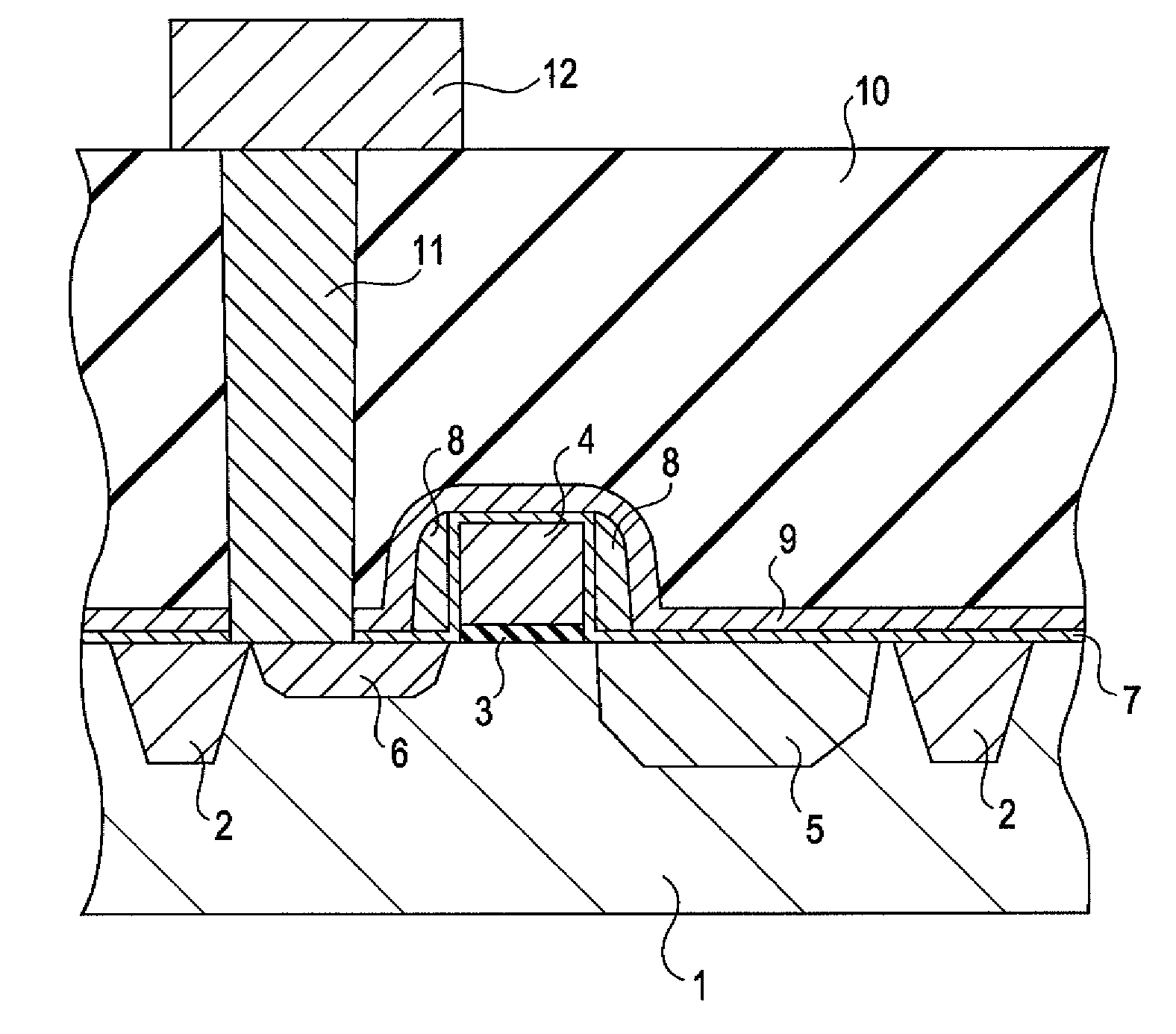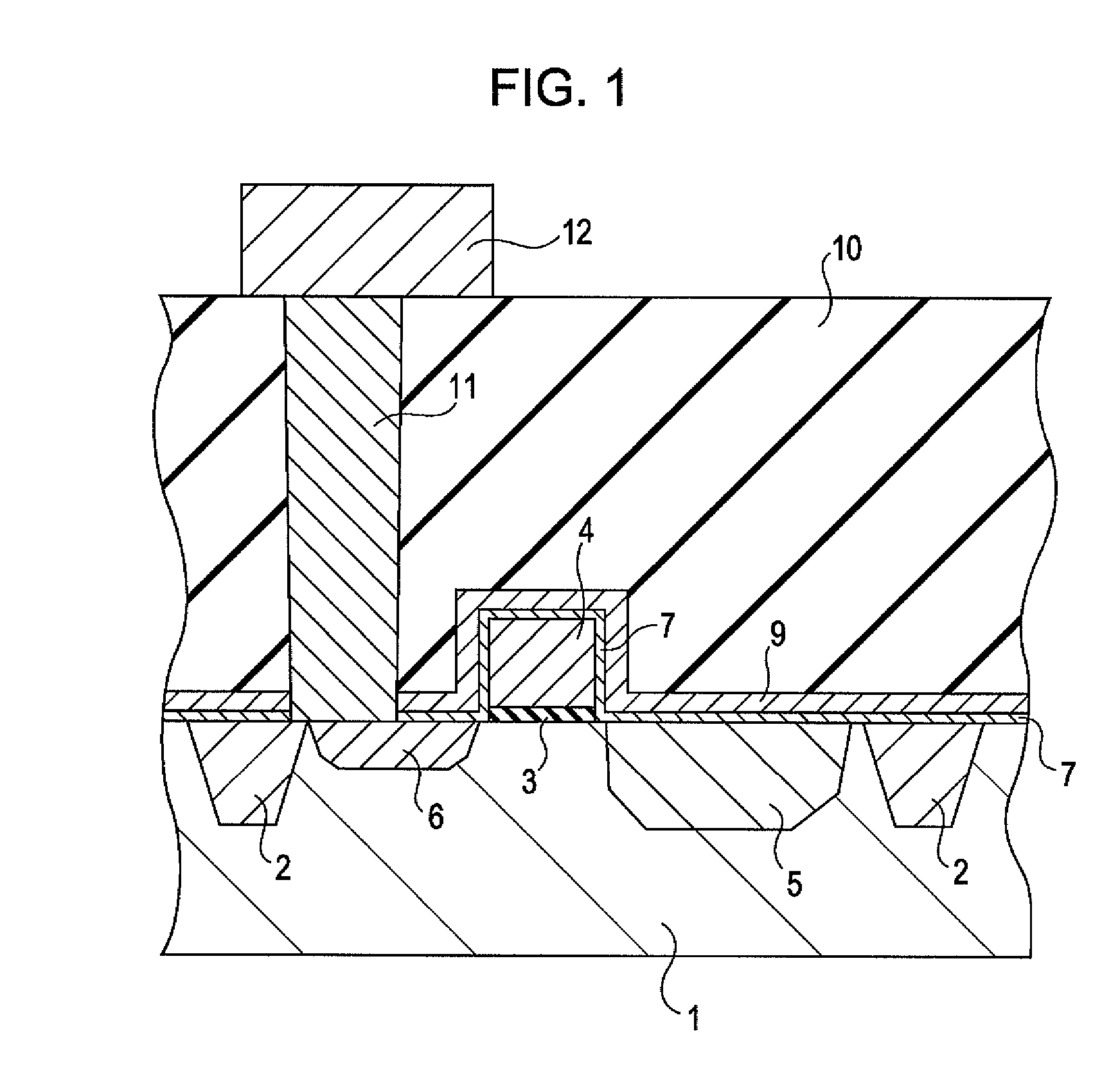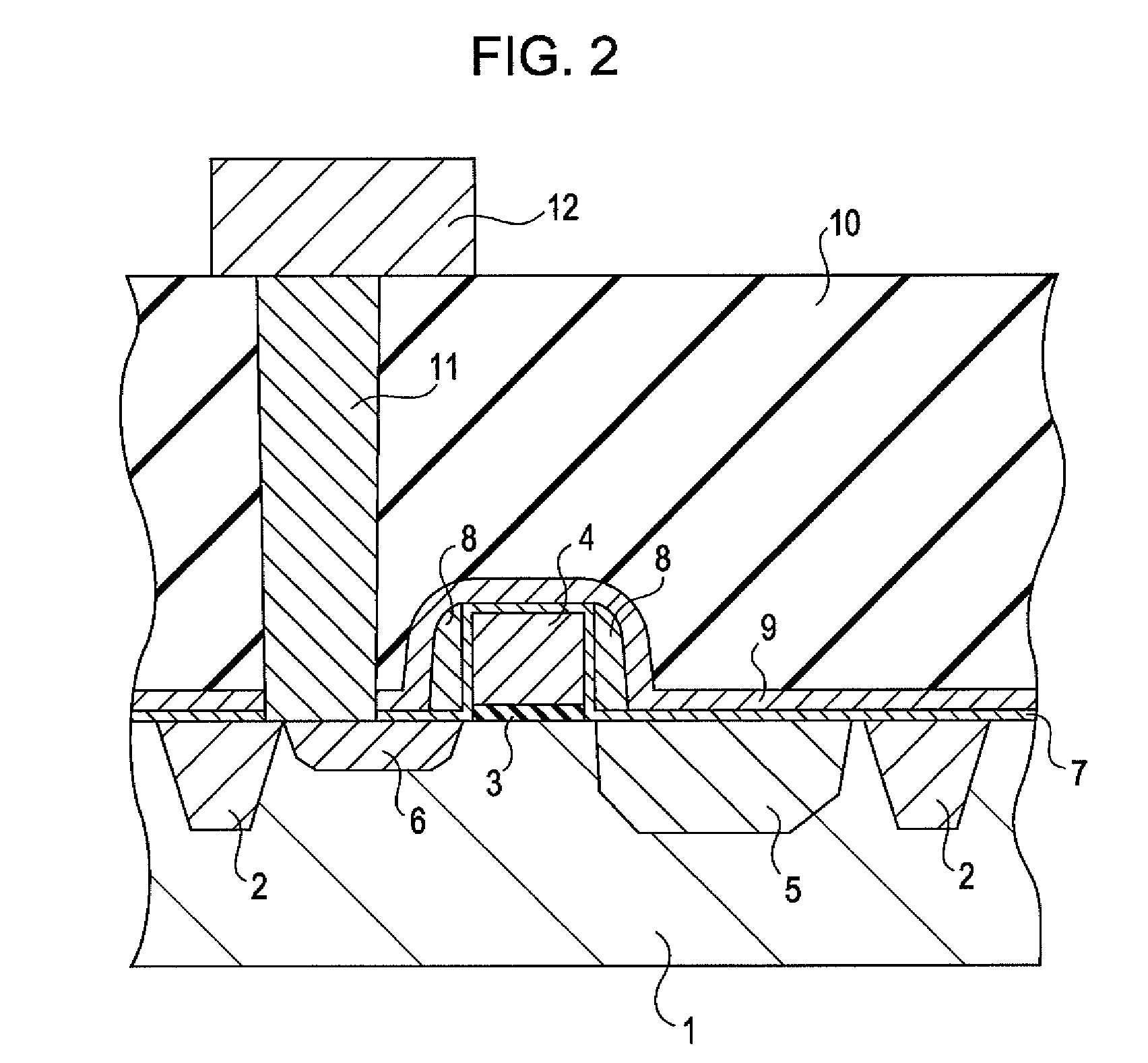Photoelectric converter and imaging system including the same
a technology of photoelectric converter and imaging system, applied in the field of photoelectric converter, can solve the problems of complex fabrication process, complicated patterning process, and complicated process, and achieve the effect of simplifying the process of forming antireflection film and etch stop film
- Summary
- Abstract
- Description
- Claims
- Application Information
AI Technical Summary
Benefits of technology
Problems solved by technology
Method used
Image
Examples
first embodiment
[0029]FIG. 1 is a cross-sectional view showing a substantial part of a photoelectric converter according to a first embodiment. This cross-sectional view corresponds to that taken along the line A-B in FIG. 4B.
[0030]FIG. 1 shows a substantial part of a photoelectric converter in which a photodiode and MOS transistor are disposed. In the actual photoelectric converter, wiring layers connected to a gate electrode 4 and the like are provided, which are not shown in FIG. 1.
[0031] In the photoelectric converter according to this embodiment, on the surface of a silicon substrate 1, which is, for example, a first-conductivity-type semiconductor substrate, a semiconductor region 5 of a conductivity type opposite the first conductivity type (i.e., second conductivity type) is disposed. The second-conductivity-type semiconductor region 5 has the same conductivity type as that of signal electric charges and accumulates signal electric charges. The semiconductor region 5 constitutes a photoel...
second embodiment
[0038] A second embodiment will be described with reference to FIG. 2. In FIG. 2, the parts having the same functions as those in the first embodiment shown in FIG. 1 are represented by the same reference numerals, and the description thereof will be omitted. This embodiment differs from the first embodiment in that a sidewall 8 is disposed on the side face of the gate electrode 4 with the silicon oxide film 7 therebetween. For example, a silicon nitride film is used as an insulating film for the sidewall 8.
[0039] That is, two types of insulating films (silicon oxide film 7 and silicon nitride films 8 and 9) are provided as a sidewall on the gate electrode 4. The difference in stress between the silicon nitride film 8 and the silicon substrate 1 or the gate electrode 4 is reduced by the silicon oxide film 7.
[0040] As in the first embodiment, the silicon nitride film 9 is arranged above at least the light-receiving surface of the photoelectric converting element and is arranged so ...
third embodiment
[0041] After the silicon nitride film 9, such as that shown in the first embodiment, which functions as the antireflection film and the etch stop film, is formed so as to cover the entire surface including a peripheral circuit portion, the silicon nitride film 9 is etched back only in the peripheral circuit portion. Thus, using the sidewalls composed of the resulting silicon nitride film, it is possible to allow the transistors in the peripheral circuit portion to have an LDD structure.
[0042] The peripheral circuit portion corresponds to scanning circuits for driving the MOS transistors and circuits for reading signals from the pixels. Examples include the clamp circuit, the column amplifier portion, the signal holding portion including the capacitors 112a and 112b, and the scanning circuits 119 and 123, which are shown in FIG. 4A.
[0043] The silicon nitride film 9 formed on the pixel area 124 is not subjected to etching and is protected with a mask or the like. By using such a str...
PUM
 Login to View More
Login to View More Abstract
Description
Claims
Application Information
 Login to View More
Login to View More - R&D
- Intellectual Property
- Life Sciences
- Materials
- Tech Scout
- Unparalleled Data Quality
- Higher Quality Content
- 60% Fewer Hallucinations
Browse by: Latest US Patents, China's latest patents, Technical Efficacy Thesaurus, Application Domain, Technology Topic, Popular Technical Reports.
© 2025 PatSnap. All rights reserved.Legal|Privacy policy|Modern Slavery Act Transparency Statement|Sitemap|About US| Contact US: help@patsnap.com



